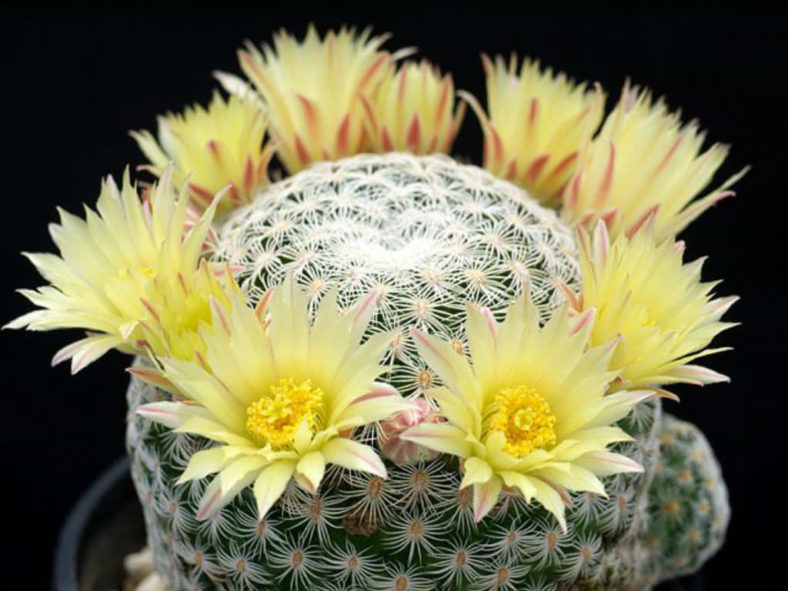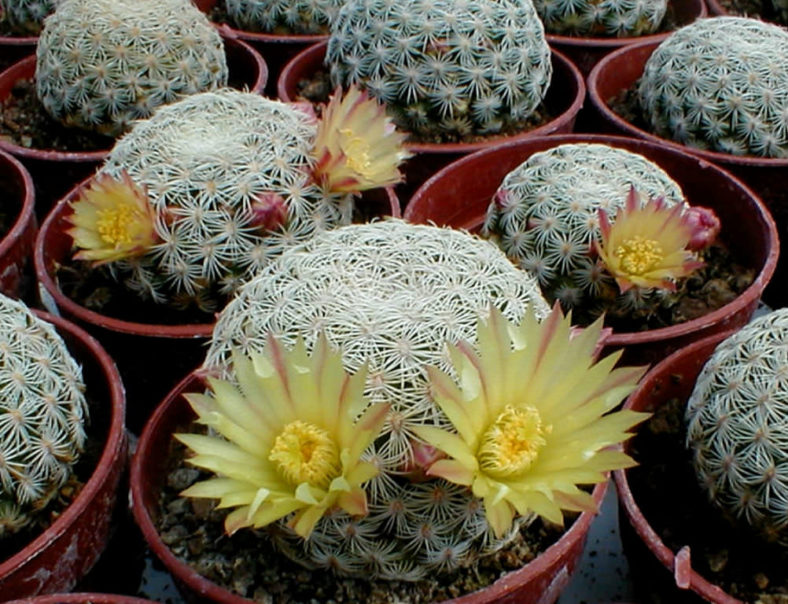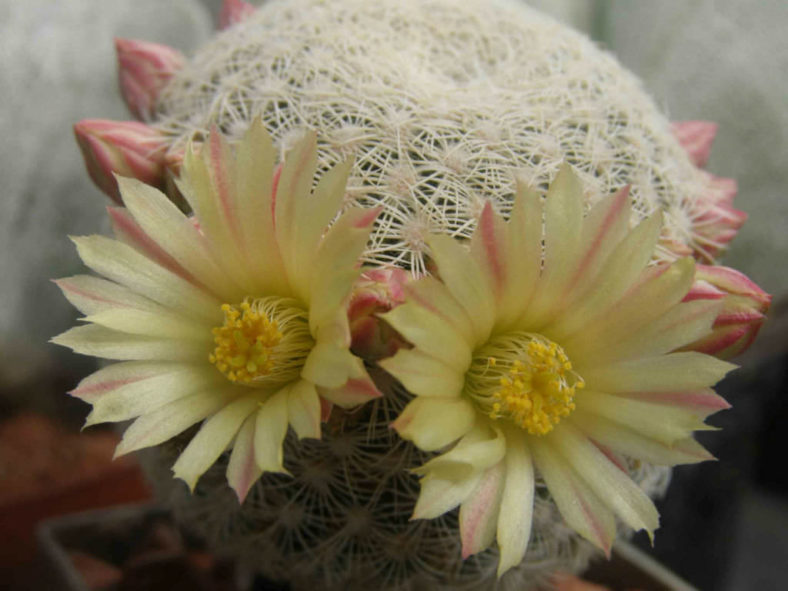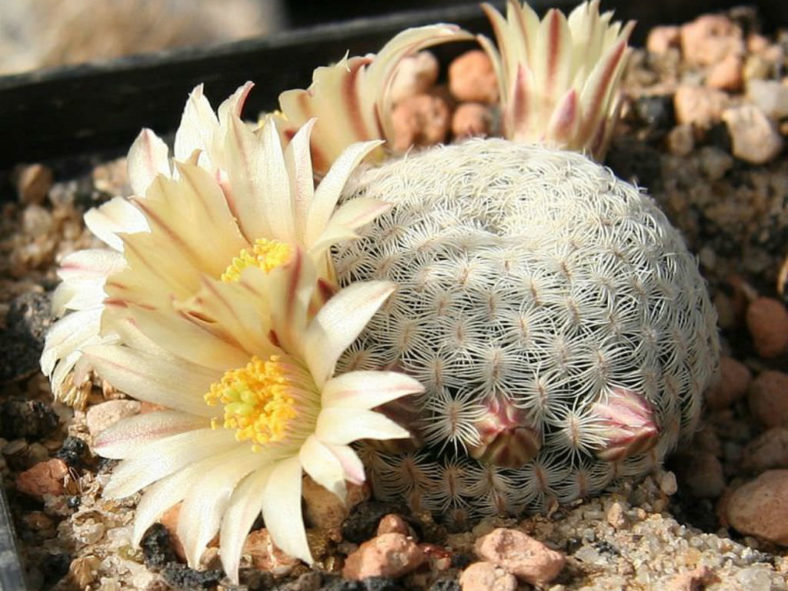Scientific Name
Mammillaria solisioides Backeb.
Common Name(s)
Pitayita
Synonym(s)
Mammillaria pectinifera subsp. solisioides, Mammillaria pectinifera f. solisioides, Solisia solisioides
Scientific Classification
Family: Cactaceae
Subfamily: Cactoideae
Tribe: Cacteae
Subtribe: Cactinae
Genus: Mammillaria
Etymology
The specific epithet "solisioides" (pronounced "so‑LEE‑see‑oy-deez") means "resembling Solisia". It refers to the likeness of this species to the members of the former genus Solisia, now a synonym of Mammillaria.
Origin
Mammillaria solisioides is native to Mexico (Oaxaca and Puebla).
Description
Mammillaria solisioides is a small cactus that usually grows solitary or may occasionally form a small clump over time. The stem is spherical to depressed cylindrical and can reach up to 3 inches (7.5 cm) in height and diameter. The spines are flexible, chalky or dirty white, pectinately arranged, and flattened against the stem surface. They can measure up to 0.2 inches (5 mm) in length.
The flowers are yellow to yellowish-white and can reach up to 1 inch (2.5 cm) in length. They are followed by greenish fruits, half-retained within the plant and barely protruding above the spines.

How to Grow and Care for Mammillaria solisioides
Hardiness: USDA hardiness zones 10a to 11b: from 30°F (-1.1°C) to 50°F (10°C).
To encourage better flowering, allow the plants to enjoy a cooling period in the winter and suspend watering. Unlike many other cacti, which use their ribs as storage devices, Mammillaria feature raised tubercles, from which spines emerge. When you water, the tubercles expand to increase water storage. The flowers emerge from the axils of these tubercles on the previous year's growth, which accounts for their interesting halo effect. The cactus mustn't be exposed to prolonged dampness or standing water. Never let your cactus sit in a dish of water. Lastly, fertilize during the growing season for the best results.
Repot as needed, preferably during the warm season. To repot Mammillaria, ensure the soil is dry before repotting, then gently remove the pot. Knock away the old soil from the roots, removing any rotted or dead roots. Treat any cuts with a fungicide. Place the plant in its new pot and backfill it with potting soil, spreading the roots as you repot. Leave the plant dry for a week or so, then begin to water lightly to reduce the risk of root rot.
Learn more at How to Grow and Care for Mammillaria.
Links
- Back to genus Mammillaria
- Succupedia: Browse succulents by Scientific Name, Common Name, Genus, Family, USDA Hardiness Zone, Origin, or cacti by Genus
Photo Gallery
Click on a photo to see a larger version.


